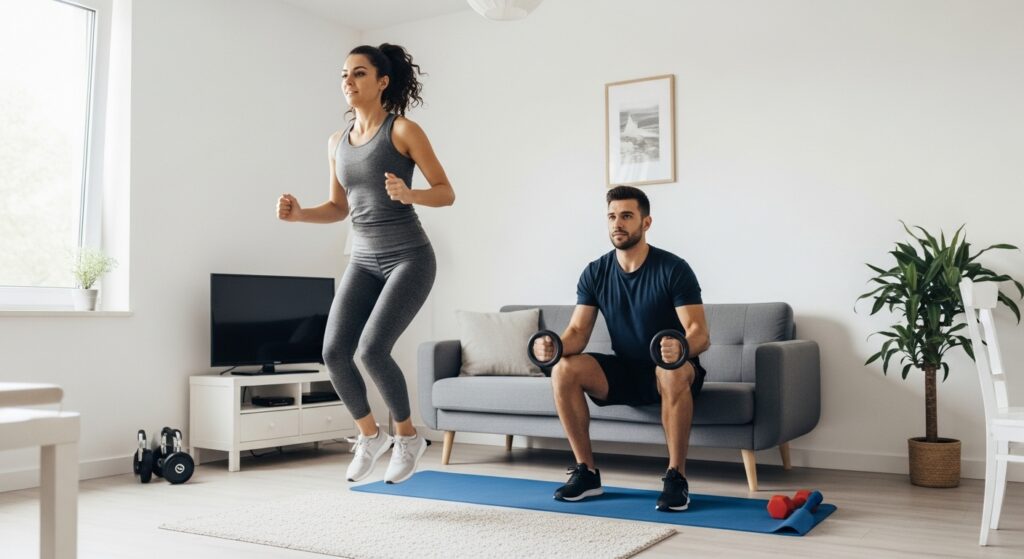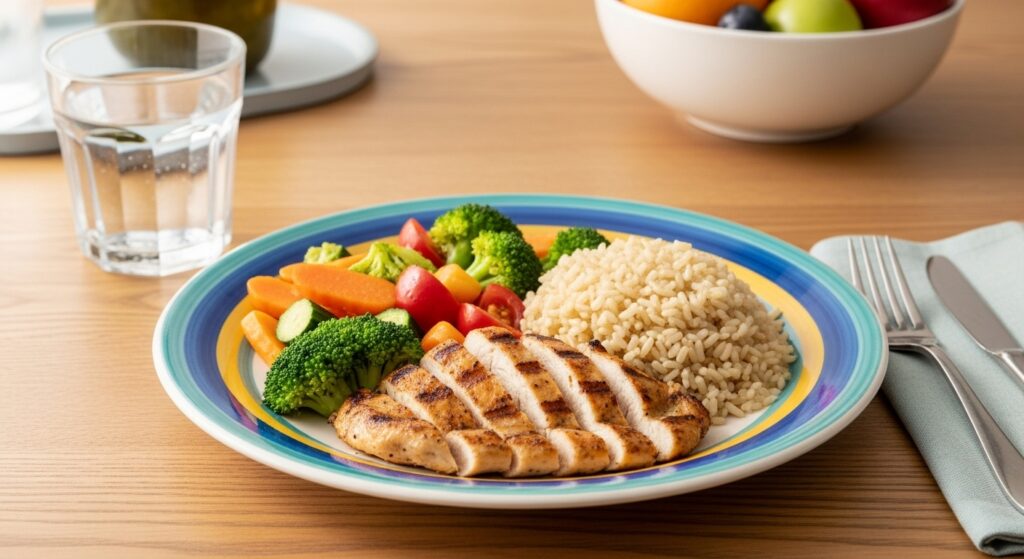Fitness and Weight Loss. Let’s be honest losing weight and getting fit isn’t always easy. We’ve all had those moments where we promised ourselves we’d start Monday and then Monday turned into next week. You’re not alone.
Fitness and weight loss aren’t about punishing yourself. They’re about building a healthier relationship with your body, mind, and habits one step at a time. If you’re ready to feel more energized, confident, and in control, this guide is for you.
Let’s take a realistic look at how you can make lasting changes that actually work.
Why Weight Loss Isn’t Just About Looks
Many people start their fitness journey hoping to fit into old jeans or feel more confident in pictures and that’s totally okay. But beyond appearances, losing even a small amount of weight can improve your overall health. According to health experts, just 5 to10% weight loss can lower blood pressure, reduce the risk of diabetes, and improve your sleep and mood.
That’s right better sleep, more energy, and fewer aches. Who wouldn’t want that?
The Basics of How Weight Loss Works
Here’s a simple way to understand it: If you eat more than your body needs, it stores the extra as fat. If you eat a bit less than your body needs and stay active, your body burns that stored fat for energy.
This is called a calorie deficit, and it’s the foundation of weight loss. But don’t worry you don’t have to count every single calorie to see progress. The key is making small, smart choices consistently.
Also, keep in mind that metabolism (how your body uses energy) can vary. Some people lose weight faster due to genetics or muscle mass. So don’t compare just focus on your journey.
Common Fitness Myths That Might Be Holding You Back
There’s so much fitness advice floating around online it’s hard to know what’s true. Here are a few myths we all need to stop believing:
- Lifting weights makes you bulky.
Nope. It helps you get stronger, burn fat, and look more toned without turning into a bodybuilder. - You have to work out for hours every day.
Even 20 to 30 minutes a few times a week makes a big difference. - You can lose weight by only doing cardio.
Strength training boosts your metabolism and helps keep the weight off.
You don’t need to be perfect just consistent.
The Best Types of Exercise for Weight Loss
When it comes to workouts, the best routine is the one you’ll actually stick with. Choose what you enjoy, and it won’t feel like a chore.

Easy-to-Start Cardio
- Brisk walking
- Dancing to your favorite playlist
- Biking or light jogging
Even a 30-minute daily walk can make a noticeable difference in your energy and mood.
Strength Training (Yes, You Can!)
Strength training builds muscle, and muscle burns more calories even while you’re resting. Start with bodyweight exercises like:
- Squats
- Push-ups
- Resistance bands
You don’t need a gym membership to get strong.
Flexibility & Rest Days
Yoga, stretching, and rest days aren’t just “extras” they’re essential. They help you avoid burnout and injury, keeping your body happy and balanced.
Eating Smarter Not Less
Let’s talk food. Dieting doesn’t mean starving or cutting out your favorite dishes forever. It’s about balance, not restriction.

What a Healthy Plate Looks Like:
- Half filled with veggies
- One-quarter with lean protein (chicken, lentils, fish)
- One-quarter with whole grains (brown rice, oats)
Healthy fats like olive oil, nuts, and avocados are good for you just use them in moderation.
Don’t Forget to Drink Water
Sometimes when you feel hungry, you’re actually just thirsty. Drink a glass of water before meals and aim for 8 to10 glasses daily.

Meal Timing Tips:
- Eat regular meals to avoid late night cravings.
- Avoid skipping breakfast it helps kickstart your metabolism.
Planning your meals ahead of time can also keep you on track and away from fast food.
Creating Habits You’ll Actually Stick To
You don’t have to change everything overnight. The best habits are the ones that feel doable. Here’s how to make it easier:
- Start small: A 10-minute walk after dinner is better than no walk at all.
- Set realistic goals: Losing 1or 2 kg per month is healthy and sustainable.
- Track your wins: Whether it’s steps walked or pants that fit better, celebrate your progress.
Even slow progress is still progress.
Staying Motivated on Tough Days
Let’s face it not every day is a “go to the gym and eat salad” kind of day. And that’s okay. What matters is showing up more often than not.
- Keep a list of reasons why you started. Read it when motivation dips.
- Follow fitness accounts that inspire you, not shame you.
- Remind yourself: You’re not “starting over” you’re continuing your journey.

Mistakes to Watch Out For
- Skipping meals can lead to cravings and overeating later.
- Crash diets often cause quick weight loss followed by even faster regain.
- Over-exercising without proper rest can lead to burnout or injury.
Take it slow. Be kind to your body.
When to Talk to a Professional
If you’re:
- Feeling exhausted or dizzy
- Not seeing any results after months of effort
- Managing health conditions like PCOS or thyroid issues
it’s worth talking to a doctor or certified nutritionist. They can help create a plan that’s just right for you.
These are simple to use and give you a starting point. Pair them with healthy habits, and you’re all set.
Final Thoughts
You don’t need a perfect plan, fancy gym, or extreme diet to make progress. You just need to take one small step today.
Start where you are. Use what you have. Do what you can. You’ve got this and we’re here to cheer you on every step of the way.
Want to make your next step easier? Try our free Calorie Calculator and start building your meal plan today!

